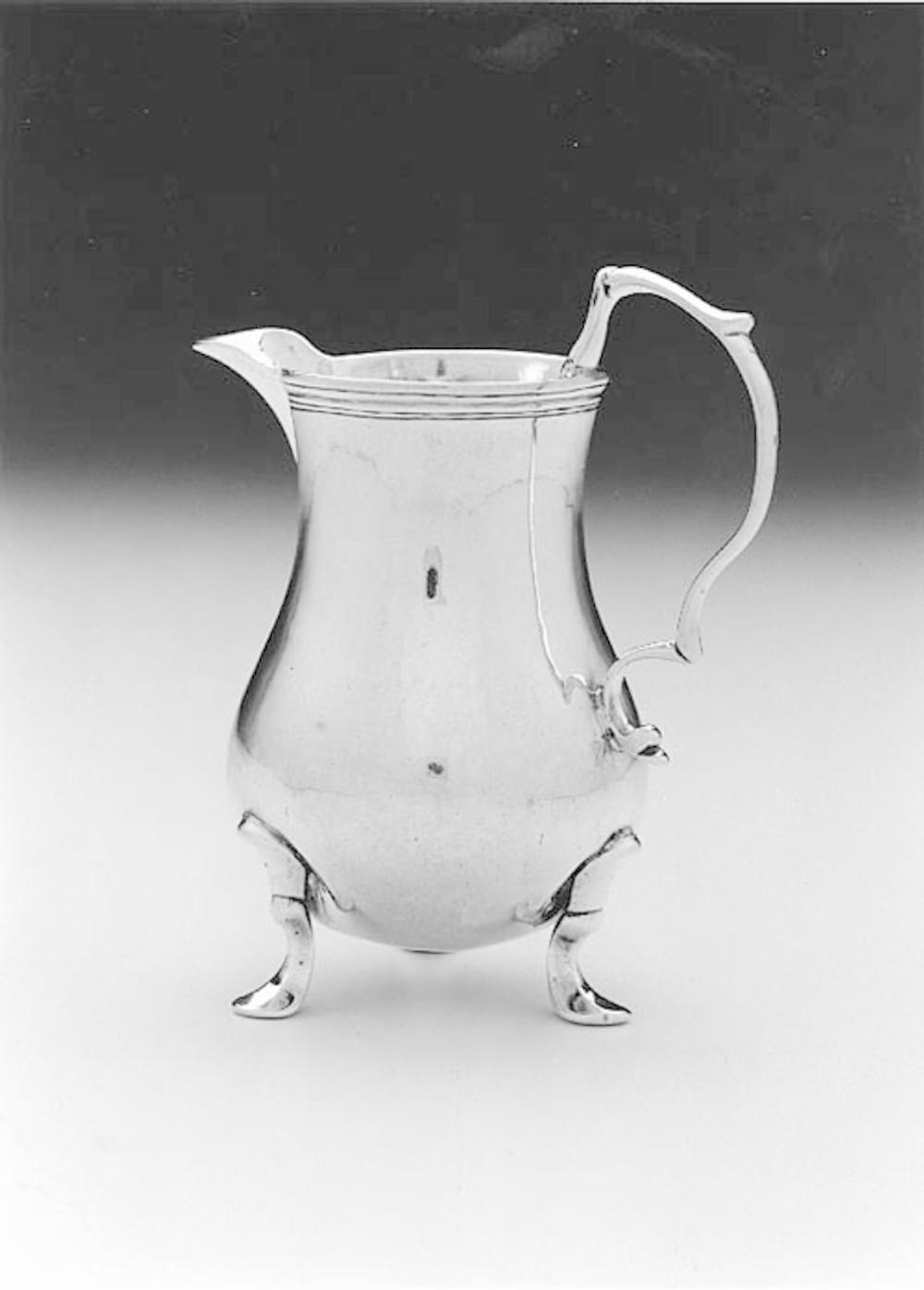Advanced Search
Creampot
Josiah Austin (1719 or 1720–about 1780)
1740–60
Object Place: Charlestown, Massachusetts
Medium/Technique
Silver
Dimensions
9.9 x 8.4 x 5.5 cm (3 7/8 x 3 5/16 x 2 3/16 in.)
Credit Line
Gift of Martha May Eliot and Abigail Adams Eliot
Accession Number1975.280
NOT ON VIEW
CollectionsAmericas
ClassificationsSilver hollowware
Josiah Austin was the oldest member of the silversmithing family that bears his name. He probably apprenticed to his cousin Jacob Hurd and, in turn, may have trained his nephews Nathaniel (1734 – 1818) and James (b. 1750) Austin in addition to Thomas Lynde (1745 – 1811) and Eleazer Wyer Sr. (1752 – 1800). Wyer married his daughter Lydia.
Austin lived and worked in Charlestown. The Massachusetts tax list for 1771 notes that he owned a quarter of a house with an adjoining shop, presumably for silversmithing activities. More than forty-five works by Austin survive in both hollowware and flatware; they range in date from the 1740s through the 1770s. It is possible that he produced silver for or with other silversmiths in the area, as evidenced by two tankards that also bear the mark of Samuel Minott (see cat. no. 2).
After Austin’s death, his initial and surname mark, the same as on this creampot, was used by his nephew Nathaniel
Austin.
Reassessment of the marks of John Allen (1671/2 – 1760) and Josiah Austin has led to the reassignment, in some cases, of variants of the “I [pellet] A” mark from Allen to Austin. Since Allen may have ceased working after 1702, when his partnership with John Edwards ended, silver made during the 1740s and later can be considered the product of Austin’s workshop. A creampot in the Museum’s collection belonging to the latter group, attributed to Austin in 1911 and reassigned to Allen in 1972, can now be returned to Austin’s oeuvre.
This gourd-shape creampot is similar in form to the previously cited example once attributed to John Allen. Austin has updated the C-scroll handle and ring foot of the older vessel by replacing them with a broken-scroll handle and three pad feet.
This text has been adapted from "Silver of the Americas, 1600-2000," edited by Jeannine Falino and Gerald W.R. Ward, published in 2008 by the MFA. Complete references can be found in that publication.
Austin lived and worked in Charlestown. The Massachusetts tax list for 1771 notes that he owned a quarter of a house with an adjoining shop, presumably for silversmithing activities. More than forty-five works by Austin survive in both hollowware and flatware; they range in date from the 1740s through the 1770s. It is possible that he produced silver for or with other silversmiths in the area, as evidenced by two tankards that also bear the mark of Samuel Minott (see cat. no. 2).
After Austin’s death, his initial and surname mark, the same as on this creampot, was used by his nephew Nathaniel
Austin.
Reassessment of the marks of John Allen (1671/2 – 1760) and Josiah Austin has led to the reassignment, in some cases, of variants of the “I [pellet] A” mark from Allen to Austin. Since Allen may have ceased working after 1702, when his partnership with John Edwards ended, silver made during the 1740s and later can be considered the product of Austin’s workshop. A creampot in the Museum’s collection belonging to the latter group, attributed to Austin in 1911 and reassigned to Allen in 1972, can now be returned to Austin’s oeuvre.
This gourd-shape creampot is similar in form to the previously cited example once attributed to John Allen. Austin has updated the C-scroll handle and ring foot of the older vessel by replacing them with a broken-scroll handle and three pad feet.
This text has been adapted from "Silver of the Americas, 1600-2000," edited by Jeannine Falino and Gerald W.R. Ward, published in 2008 by the MFA. Complete references can be found in that publication.
DescriptionRaised, pear-shaped creampot has cast, scrolled handle and three pad feet. An applied, drawn molded rim leads into spout having a small baluster drop. Legs have been pushed into body, and there is an old, repaired break in handle.
Marks
Stamped " J [pellet] AUSTIN" in roman letters within a rectangle on the base.
InscriptionsLater engraving "L / I * M" appears below the mark in roman capitals. The letters "A L D L D" sprigged script, added later, are found on the body below the spout.
ProvenancePossibly owned by the May family of Roxbury, Massachusetts, by descent to the donors.1
1. [n.a.], A Genealogy of the Descendants of John May who came from England to Roxbury in America, 1640 (Boston: Franklin Press, 1878), pp. 4, 43-4, 53, 83.
1. [n.a.], A Genealogy of the Descendants of John May who came from England to Roxbury in America, 1640 (Boston: Franklin Press, 1878), pp. 4, 43-4, 53, 83.




